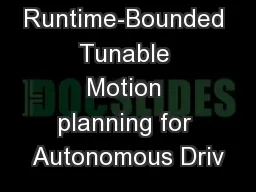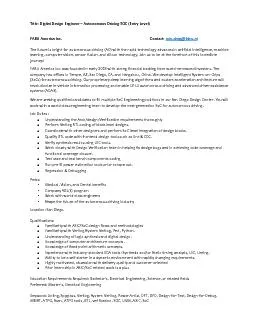PPT-Autonomous On Board Mission Planning
Author : jade | Published Date : 2024-01-03
Garcia Franchi Gaston Alonso Roberto Pucci Nadia Kuba Jose Comision Nacional de actividades espaciales CONAE Argentina Table of Contents Main Functions Objective
Presentation Embed Code
Download Presentation
Download Presentation The PPT/PDF document "Autonomous On Board Mission Planning" is the property of its rightful owner. Permission is granted to download and print the materials on this website for personal, non-commercial use only, and to display it on your personal computer provided you do not modify the materials and that you retain all copyright notices contained in the materials. By downloading content from our website, you accept the terms of this agreement.
Autonomous On Board Mission Planning: Transcript
Download Rules Of Document
"Autonomous On Board Mission Planning"The content belongs to its owner. You may download and print it for personal use, without modification, and keep all copyright notices. By downloading, you agree to these terms.
Related Documents














